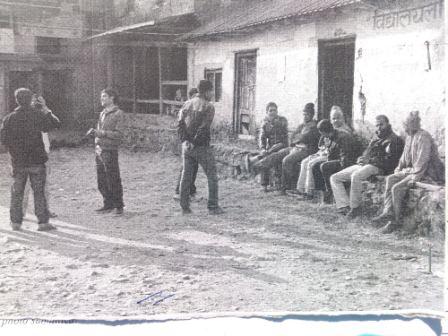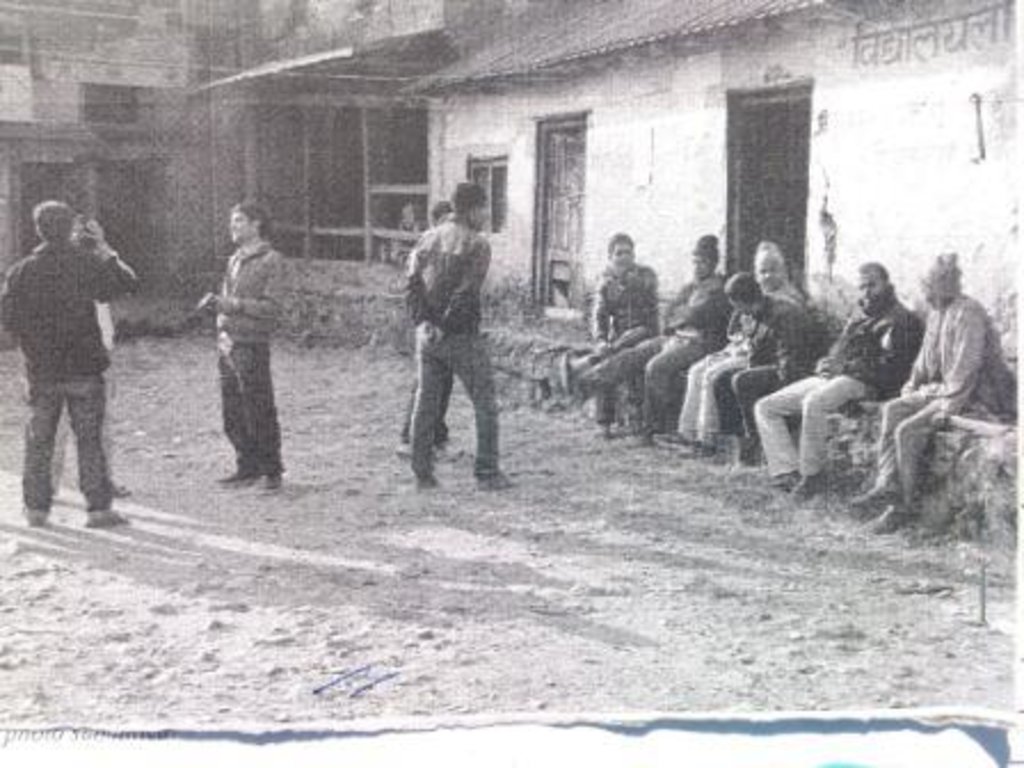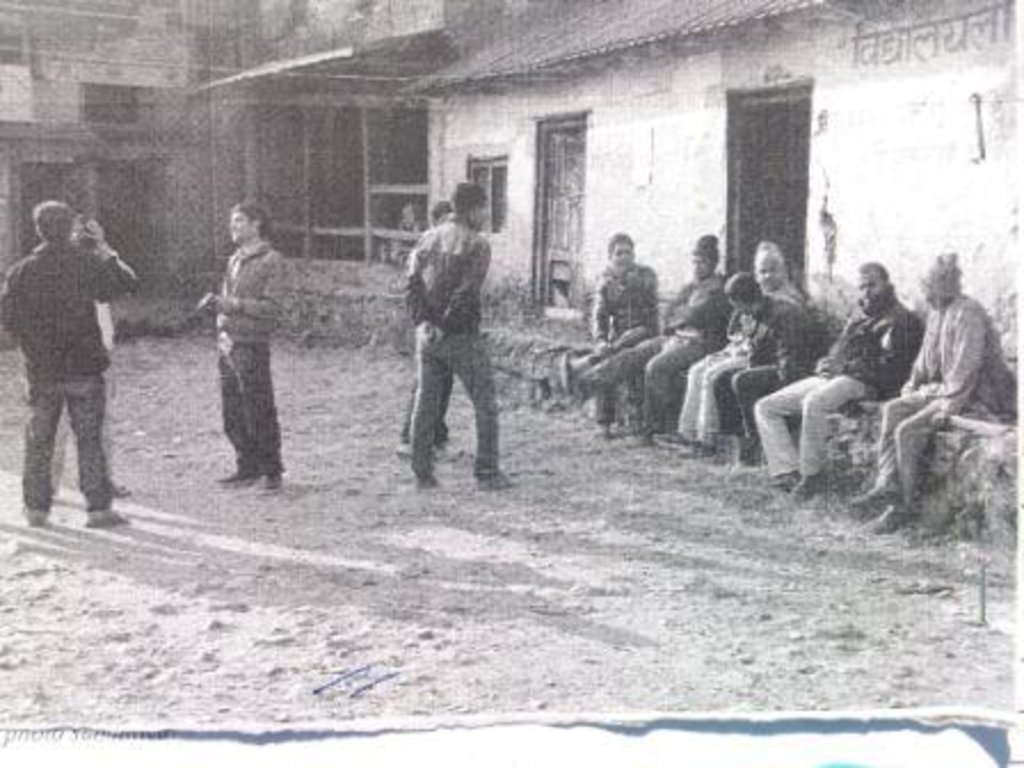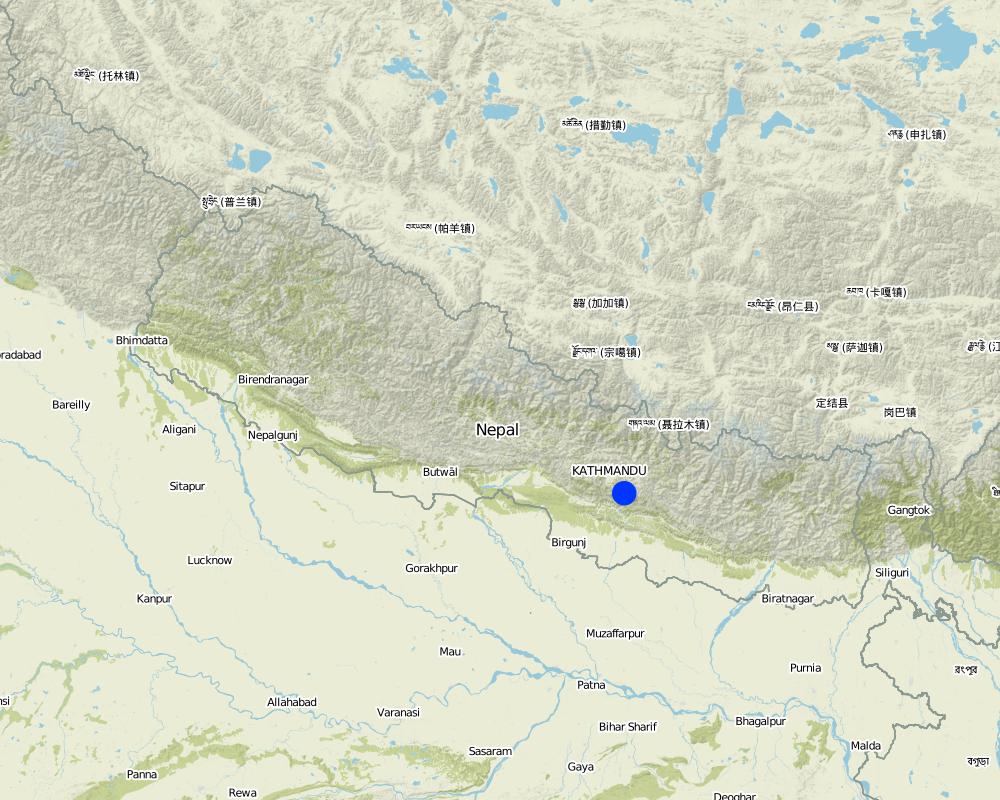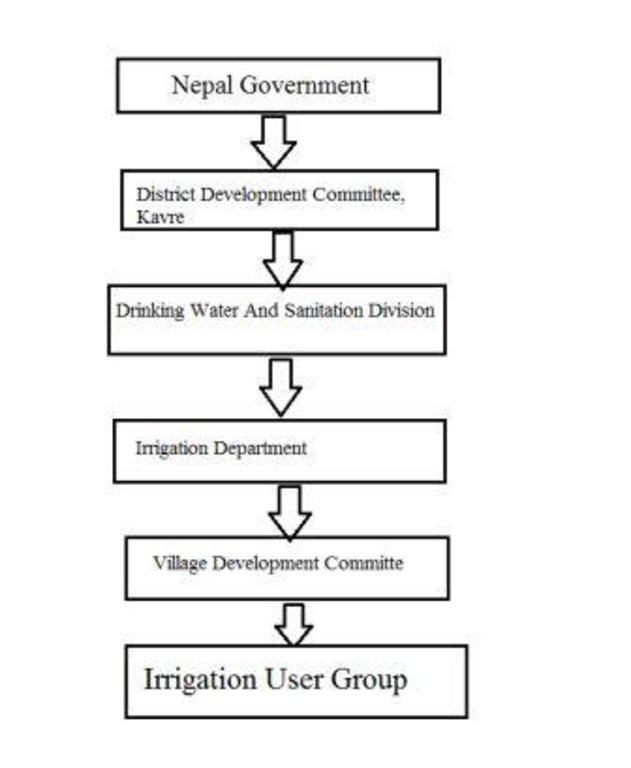Pipeline Irrigation [尼泊尔]
- 创建:
- 更新:
- 编制者: Sabita Aryal
- 编辑者: –
- 审查者: Fabian Ottiger
Pipe Sinchai
approaches_2636 - 尼泊尔
查看章节
全部展开 全部收起1. 一般信息
1.2 参与方法评估和文件编制的资源人员和机构的联系方式
SLM专业人员:
Singtan Gangaraj
Chyamrangbesi-2 kavrepalanchowk
尼泊尔
SLM专业人员:
Bajracharya Bisweta
bisarm73@gmail.com
Kathmandu University
Dhulikhel
尼泊尔
有助于对方法进行记录/评估的机构名称(如相关)
Kathmandu University (KU) - 尼泊尔1.3 关于使用通过WOCAT记录的数据的条件
(现场)数据是什么时候汇编的?:
02/01/2013
编制者和关键资源人员接受有关使用通过WOCAT记录数据的条件。:
是
1.4 SLM技术问卷的参考
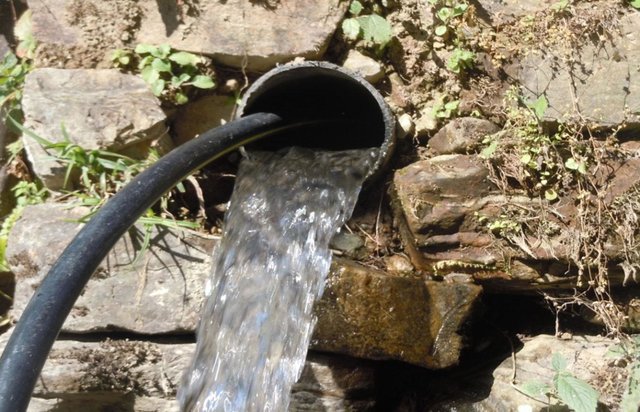
Pipe Irrigation [尼泊尔]
Waterways and pipelines to draw water from closeby rivers for irrigation and household purposes.
- 编制者: Sabita Aryal
2. SLM方法的描述
2.1 该方法的简要说明
The process and measures taken to draw water from nearby rivers for irrigation and household purposes.
2.2 该方法的详细说明
该方法的详细说明:
Aims / objectives: This approach was carried out to overcome the problem of less agricultural yield due to dry land.
Methods: This approach was first proposed by Mr. Gangaraj Singtan and later on a committee was formed. This committee further carried on the work through interactions.
Stages of implementation: To implement this approach,they had to face financial problems.This was solved by the contribution provided by the District Development Committee.And another was collected from villagers and the work could be carried out further.
Role of stakeholders: Everyone from every ethnic group was involved in the work.However to carry on the major discussions,the committe was formed.The following people were involved on the central committee: Mr. Gangaraj Singtan, Mr. Dand Prasad Dahal, Mr. Khemraj Dahal, Mr. Suman Dahal and mr Kiran Dahal.
2.3 该方法的照片
2.5 采用该方法的国家/地区/地点
国家:
尼泊尔
区域/州/省:
Chyamrangbesi-2
有关地点的进一步说明:
kavrepalanchowk
Map
×2.6 该方法的开始和终止日期
注明开始年份:
2004
2.7 方法的类型
- 最近的本地倡议/创新
2.8 该方法的主要目的/目标
The Approach focused mainly on other activities than SLM (agriculture)
Mainly the approach was carried out to reduce the problem of dry soil that had led to low agricultural production in the village.
The SLM Approach addressed the following problems: The main problem to be addressed were the low agricultural production due to soil and the lack of cash to invest for the soil management to overcome the problem.
2.9 推动或妨碍实施本办法所适用的技术的条件
财务资源和服务的可用性/可得性
- 阻碍
The villagers could not do the full investment for the adoption of the technology.
Treatment through the SLM Approach: District office provided with 50% investment to carry on the technology.
机构设置
- 阻碍
The villagers did not have any idea of this kind of irrigation.
Treatment through the SLM Approach: The trainers and advisor helped them to know about this approach.
法律框架(土地使用权、土地和水使用权)
- 启动
The existing land ownership, land use rights / water rights greatly helped the approach implementation: The only hindrance was finance.
工作量、人力资源可用性
- 阻碍
Due to financial aid problem it was not possible to appoint labours.
Treatment through the SLM Approach: The villagers themselves worked inorder to make this possible.
3. 相关利益相关者的参与和角色
3.1 该方法涉及的利益相关者及其职责
- 当地土地使用者/当地社区
Every group of people be it brahmin, tamang , chhetri, etc were involved including women.
Formed a committee for the approach and implemented together. Formed a committee to work on the technology.
- 地方政府
DDC provided finance for the implementation.
- Engineer, MrPadam Bahadur Singtan helped with the model
如果涉及多个利益相关者,请注明领导机构:
Mainly, Mr. Gangaraj Singtan proposed the idea of the technology followed by discussion and interaction in the whole community.
3.2 当地土地使用者/当地社区参与该方法的不同阶段
| 当地土地使用者/当地社区的参与 | 指定参与人员并描述活动 | |
|---|---|---|
| 启动/动机 | 自我动员 | Mr.Gangaraj Singtan initiated the project by forming a committee and further worked in implementing it. |
| 计划 | 互动 | Planning for the project was done by interaction in the committee |
| 实施 | 互动 | Interaction was done in the committee to implement it. |
| 监测/评估 | 互动 | land uses do it themselves in their own house and further interact in the meetings. |
| Research | 互动 | land users with their involvement in the meetings. |
3.3 流程图(如可用)
3.4 有关SLM技术选择的决策
具体说明谁有权决定选择要实施的技术:
- 仅限土地使用者(自主)
解释:
Since, the villagers depend on agriculture for there livelihood, to overcome their problem the land users themselves took initiative followed by different procedures upto the district level.
Decisions on the method of implementing the SLM Technology were made by by land users* alone (self-initiative / bottom-up). To implement the technology,District Development Committee helped with financewhich helped the land users to carry out further process.
4. 技术支持、能力建设和知识管理
4.1 能力建设/培训
是否为土地使用者/其他利益相关者提供培训?:
否
4.2 咨询服务
土地使用者有权使用咨询服务吗?:
是
- By Mr.Padam Bahadur Singtan
说明/注释:
Name of method used for advisory service: Technical advice by Mr.Padam Bahadur Singtan; Key elements: regarding the size of the pipe, Route of the irrigation pipe; The advice was effective as no problem has been accounted so far.
Advisory service is quite adequate to ensure the continuation of land conservation activities; The villagers seem to have idea of the process to be followed further.
4.3 机构强化(组织发展)
是否通过这种方法建立或加强了机构?:
- 否
4.4 监测和评估
监测和评估是该方法的一部分吗?:
是
注释:
no. of land users involved aspects were regular monitored by land users through observations; indicators: allocation of project activities
management of Approach aspects were ad hoc monitored by land users through observations
There were no changes in the Approach as a result of monitoring and evaluation
There were no changes in the Technology as a result of monitoring and evaluation
4.5 研究
研究是该方法的一部分吗?
是
明确话题:
- 经济/市场营销
提供进一步的细节,并指出是谁做的研究:
The research was entirely villagers work.
Research was carried out on-farm
5. 融资和外部物质支持
5.1 该方法中SLM组成部分的年度预算
如果不知道准确的年度预算,请给出一个范围:
- 2,000-10,000
注释(例如主要的资助来源/主要捐助者):
Approach costs were met by the following donors: local government (district, county, municipality, village etc) (District Development Committtee , Village Development Committee): 50.0%; local community / land user(s) (A committee formed for the project): 50.0%
5.2 为土地使用者提供财政/物质支援
土地使用者是否获得实施该技术的财政/物质支持?:
是
5.3 对特定投入的补贴(包括劳动力)
- 设备
| 具体说明哪些投入得到了补贴 | 程度如何 | 对补贴做出具体说明 |
|---|---|---|
| Cement and pipe | 部分融资 | |
如果土地使用者的劳动力是一项重要的投入,那么是不是:
- 自愿
注释:
For the benefit of their land, land users were involved.
The equipment was owned by the land users themselves and for cement and pipes, partly contribution was made by DDC.
5.4 信用
是否根据SLM活动的方法给予信用值?:
否
6. 影响分析和结论性陈述
6.1 方法的影响
该方法是否帮助土地使用者实施和维护SLM技术?:
- 否
- 是,很少
- 是,中等
- 是,支持力度很大
The runoff of upper soil due to erosion was prevented because of the flow of water through pipe and in fields, more yeild has been noticed.
该方法是否有助于社会和经济弱势群体?:
- 否
- 是,很少
- 是,中等
- 是,支持力度很大
All the ethnic group were benefitted as their livelihood improved in different ways.
Did other land users / projects adopt the Approach?
- 否
- 是,很少
- 是,中等
- 是,支持力度很大
ward no.9 of the same VDC
Did the Approach lead to improved livelihoods / human well-being?
- 否
- 是,很少
- 是,中等
- 是,支持力度很大
Increased yield led to increased incomne so the land users were able to improve their settlement, build good homes, got school fees for their children.
Did the Approach help to alleviate poverty?
- 否
- 是,很少
- 是,中等
- 是,支持力度很大
The income from the yeild helped greatly to improve their way of living, education and better health.
6.2 土地使用者实施SLM的主要动机
- 增加生产
for better cultivation.
- 增加利润(能力),提高成本效益比
better yield leads to better economic condition
- 减少工作量
no load to carry water from distance
- 加入运动/项目/团体/网络
to prevent dry soil and upper soil loss.
6.3 方法活动的可持续性
土地使用者能否维持通过该方法实施的措施(无外部支持的情况下)?:
- 是
若是,请说明如何维持:
They have the idea of the procedures to carry out. Regarding finance also they have been collecting Rs.30 from each month and so far have collected 13000. So, they may not have problem in finance as well.
6.4 该方法的长处/优点
| 土地使用者眼中的长处/优势/机会 |
|---|
| Greenery (How to sustain/ enhance this strength: This can be sustained by awareness to the people about consequences of dry soil and poor use of water.) |
| Better livelihood. |
| 编制者或其他关键资源人员认为的长处/优势/机会 |
|---|
|
Increased yeild led to increased income and hence better economic condition. (How to sustain/ enhance this strength: Proper use of water.) |
| The committee formed led to united work. (How to sustain/ enhance this strength: Participation of all people without discrimination.) |
6.5 该方法的弱点/缺点以及克服它们的方法
| 土地使用者认为的弱点/缺点/风险 | 如何克服它们? |
|---|---|
| Large amout may lead to water wastage. | People must be encouraged to make proper use or go for alternative use. |
| 编制者或其他关键资源人员认为的弱点/缺点/风险 | 如何克服它们? |
|---|---|
| Sometimes the water may get wasted if it is not required in the field. | The water when not required may be used for other purposes or may just simply drain in other route where it is required. |
| Sometimes the amount of water required by the crops may exceed due o which the crops may die. |
7. 参考和链接
7.1 方法/信息来源
- 实地考察、实地调查
- 与土地使用者的访谈
链接和模块
全部展开 全部收起链接

Pipe Irrigation [尼泊尔]
Waterways and pipelines to draw water from closeby rivers for irrigation and household purposes.
- 编制者: Sabita Aryal
模块
无模块


